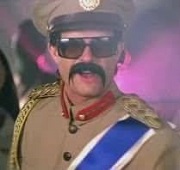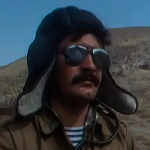|
Nessus posted:Did the Garand have any unique characteristics? I thought it was merely a very good rifle. It was just that there were so many of them... It was a standard issue semi-automatic rifles, when everyone else was using predominantly bolt action rifles. The value of individual soldier's weapons is overrated, though.
|
|
|
|

|
| # ? May 27, 2024 04:53 |
|
JcDent posted:Good thing they had an unsinkable carrier parked just off the shore of France! For every nation, you're always pulling from your reserves. Your reserves could be units not directly on the front lines, or far back and still in training. After reserves you have volunteers which go through whichever training process that country has, and for which arm of the forces. Similarly, you have conscription which follows the same lines. Lastly, if volunteers/conscription numbers aren't high enough its not unheard of that an army attempts to re-muster, taking men away from logistics/support units and turning them into combat units.
|
|
|
|
JcDent posted:No loving clue how Britain started with the regimental system, where each regiment is responsible for recruiting, training and managing its own reinforcements from its own training units - reinforcements would be 'green' but they would at least be trained in their regiment's way of doing things by regimental veterans and they would have some amount of esprit d'corp. This system quickly became impossible to manage once casualties mounted - some regiments' battalions where almost entirely wiped out at during Dunkirk and the system strained in North Africa, when newly-trained soldiers would sometimes be (horror!) sent to other regiments to fill gaps, then fell apart almost completely following the invasion of Italy. A new system was already being worked up in preparation for D-Day, with things called Reinforcement Holding Units - each RHU was broken down into three or four sub-units, each of which was responsible for preparing, organising and deploying men for a particular regiment so men fresh from training in the UK would get at least a period of working-up and bonding with their unit-to-be. So it seems it was a sort of fudge between the German system of maintaining unit integrity to the very end, and the production-line of the US's repple-depple system. Edit for this bit: Taerkar posted:The biggest flaw, iirc, of the Replacement Depot system the US Army used was that the reinforcements/replacements were handed out piecemeal and thus it just dropped semi-random soldiers into whatever unit needed bodies at the time, and there was the possibility that a soldier that recovered from wounds would be sent to another unit once they were ready for action again. As far as I can make out the British RHU sub-units also handled soldiers with minor injuries, those being returned to service from medical units and individuals/small units being rested or regrouped, all from within their assigned regiment. So unless you were 'trawled' by an edict higher up the command chain, once you were in a regiment you stayed with it - injury wouldn't mean that you were thrown into the pot and could go anywhere when you went back into service. And another edit because I just had a thought: As I learnt when researching my big ramble-post about fighter pilot training, the Allies and the Germans followed a similar divide in how they arranged that. Obviously aircrew and infantry have massively different requirements when it comes to reinforcement/replacement but it stands out to me that the Luftwaffe had a system (which they maintained to the bitter end, long after material and personnel shortages had rendered it impractical) of each fighter Group having a dedicated training squadron within it, staffed by pilots rotating out of the service squadrons so new pilots would be trained in the Group's own methods, tactics and culture by experienced front-line pilots. The Allies developed a kind-of repple-depple-like system where pilots that had completed standard training would go to an Operational Training Unit, which was entirely separate from the regular squadron system, to learn how to fly and fight a specific type of aircraft and would then be drafted from the OTU to whichever squadron needed trained pilots. BalloonFish fucked around with this message at 14:42 on Jan 23, 2020 |
|
|
|
The biggest flaw, iirc, of the Replacement Depot system the US Army used was that the reinforcements/replacements were handed out piecemeal and thus it just dropped semi-random soldiers into whatever unit needed bodies at the time, and there was the possibility that a soldier that recovered from wounds would be sent to another unit once they were ready for action again. It wasn't quite necessary for the 'always on the front line' nature of the deployment in Europe. Didn't they use a different system in the Pacific due to the nature of the fighting there? Nessus posted:Did the Garand have any unique characteristics? I thought it was merely a very good rifle. It was just that there were so many of them... It's not as much the Garand itself as what it represented. It was a bit more complicated to manufacture, a bit more logistically intensive due to the higher sustained fire rate compared to a bolt action, and it was a new weapon introduced right at the start of an industrial conflict that was actually produced in primary service weapon numbers. The kind of industrial capacity that could do that could also make hundreds of warships, thousands of freighters, and so many tanks that they not only partially supplied Allies with tanks but also slowed down production mid war because they may have made too much. Taerkar fucked around with this message at 14:24 on Jan 23, 2020 |
|
|
|
JcDent posted:Me: it's so hard to ascribe points costs to units in miniature wargames, it's basically impossible to do that in real life I have a British document that calculates point values of tanks on the battlefield, IIRC they gave a Comet and an IS-3 the same value. In true Wargaming fashion they also calculated the stats for an IS-3 armed with the 88 mm Kwk 43.
|
|
|
|
Vavrek posted:Huh. I thought I'd heard about this system being used in the Vietnam War. Hadn't realized it was in place earlier. the system in Vietnam was quite a bit worse in comparison because of the yearly tours that people would go on: a soldier might sign up for (or be drafted into) a tour, be assigned to a unit, and then have to integrate into that unit, and then just leave after their tour was up. The unit they'd be assigned to might be whichever one just has a need or an opening at the time that they qualify for, and everyone within that unit may well have varying lengths of tours which meant individuals would just leave with no regard for everyone else or the unit as a whole one of the takeaways that came out of Vietnam was the suggestion that units should be formed together, trained together, and move together as whole units, possibly as large as regiments, though I don't know if they ever instituted that reform afterwards
|
|
|
|
Nessus posted:Broadly speaking the Germans would leave a particular unit in battle for a while and just allow losses to happen, evacuating wounded and such of course. Eventually that unit would get rotated to the rear, where it would be replenished by new people from the same region where it was raised and recovered injured, who would get a chance to do some training and form camaraderie. Isn't that basically what the US did with fighter pilots? At least Naval aviators.
|
|
|
|
Comstar posted:Part of it I think was that the small German army after WW1 trained their members to be able to lead 3 levels up and 3 levels down and were trained to be able to lead the incoming conscripts when the army started to expand after '33. British training had Sargent's yelling "WHAT ARE YOU DOING PRIVATE YOU'RE NOT PAID TO THINK" so lower level's of the army wasn't as free to do things tactically. This was a feeling on the British side in North Africa after losing several times and part of Montgomery's training to was to try to improve that.
|
|
|
|
Nessus posted:Did the Garand have any unique characteristics? I thought it was merely a very good rifle. It was just that there were so many of them... From a technical point of view, the M1 Garand's combination of an en-bloc clip and semi-automatic action is pretty unique to it. That's not really significant, though. You're right that the main advantage was that there were so many of them, compared to everyone else who could maybe muster one per squad on a good day, but I'm actually going to call into question whether that actually gives a good picture of the situation. Neither the Soviet Union nor Germany could issue semi-auto rifles on such a large scale, but what both of those had were submachine guns. Lots and lots and lots of submachine guns. Not as the standard service arm of the basic rifle squad, but concentrated in assault units. I'd say that in a lot of tactical situations, the submachine gun is an able contender to the Garand as a weapon, and in a many of the situations where the Garand is substancially better, it's not competing with bolt-action rifles, but with machine guns.
|
|
|
|
I know this might seem a silly question but we've all read about all the attempts of POW's of the 2nd World War trying all antics to escape which makes me wonder, were such things attempted in the 1st World War POW camps on both sides during that conflict?
|
|
|
|
|
Who invented the term "warfighter" and where can we find them to make them pay
|
|
|
|
It's PC gone mad, of course.
|
|
|
brugroffil posted:Who invented the term "warfighter" and where can we find them to make them pay In the modern context, what is more irritating? this or warrior?
|
|
|
|
|
brugroffil posted:Who invented the term "warfighter" and where can we find them to make them pay The earliest reference I can find to it was in the post-Vietnam Army reforms of the 70s.
|
|
|
|
SeanBeansShako posted:I know this might seem a silly question but we've all read about all the attempts of POW's of the 2nd World War trying all antics to escape which makes me wonder, were such things attempted in the 1st World War POW camps on both sides during that conflict? Russian POW camps were really laxly guarded and many Germans and Austrians were able to escape. https://www.rbth.com/history/328902-pows-in-russia-wwi quote:POWs didnít work for free, and often they were rather well paid. One escapee, Austrian colonel Graf Lubensky, who escaped from a POW camp in Kostroma near Moscow, had earned enough money to buy himself a false Russian passport. He crossed half of the country with it until safely reached neutral Sweden, and after that Ė Germany. Wikipedia has a list of notable escapes. I think my favourite is the Welshman who played insane so well that Turkish officers and doctors were persuaded to return them to home. https://en.wikipedia.org/wiki/List_of_prisoner-of-war_escapes#World_War_I Nenonen fucked around with this message at 15:55 on Jan 23, 2020 |
|
|
|
Comstar posted:Part of it I think was that the small German army after WW1 trained their members to be able to lead 3 levels up and 3 levels down and were trained to be able to lead the incoming conscripts when the army started to expand after '33. British training had Sargent's yelling "WHAT ARE YOU DOING PRIVATE YOU'RE NOT PAID TO THINK" so lower level's of the army wasn't as free to do things tactically. I am no Wehrmacht fanboy, but their infantry had another advantage; they were given higher priority for selecting recruits based on initiative and aptitude. In very, very brief terms - say you're drafted in WWII. In the US Army you report to an induction center and are given a battery of tests. They give you IQ tests, physicals, etc. (all highly scientific by the standards of the 1940s), and ask questions about your background and existing skills. If you already have a skill that transfers to something useful you'll be sent for further training, then assigned a corresponding job. For example, if you were in the Ham Radio club in High School you might end up fixing radios in Army Air Corps planes at a base in England. Draftees with higher IQs and aptitude were given more high tech or high skill jobs, like Intel Analyst or the like. The problem with this system is that the infantry is at the bottom. It becomes a catch-all for people who don't do well on IQ tests or have useful skills or education. In the Wehrmacht the infantry was much more prestigious - think of the WWI image of the motivated, high initiative "Stormtrooper" and carry it forward. When inducted recruits were given similar tests to those of the US army, but there were additional tests where recruits were put in unusual situations to see how well they'd think on their feet. They'd be put through mazes or obstacle courses with puzzles, that sort of thing. The recruits who did the best in these tests were sent to the infantry. Now, yes, of course, there are all sorts of problems with this methodology. But the fact that the Wehrmacht's infantry was selected for initiative and smarts and given more prestige did often result in better performance.
|
|
|
|
brugroffil posted:Who invented the term "warfighter" and where can we find them to make them pay It was distressingly popular in the 90s. It's sad to see that it persists today.
|
|
|
|
brugroffil posted:Who invented the term "warfighter" and where can we find them to make them pay Shameful admission: I liked it when I first heard it. The way the military was talked about when I was growing up (late 80s) tended to be a bit antiseptic, and as was with the Russians seemed less and less likely, people were correspondingly more likely to view the military as a disaster relief organization with college benefits. Putting more "war" in the vocabulary helped to remind everyone what the real point was. I mean, in the late 90s, someone did a reality show about US Army basic training, and there was one recruit tearfully confessing into the camera that they hadn't expected there to be so much emphasis on guns in the Army. She might have needed to hear someone say "warfighter" a few more times. Now it grates on me too, but just because of repetition. It doesn't grate on me the way "please action this ask" does.
|
|
|
|
Cessna posted:I am no Wehrmacht fanboy, but their infantry had another advantage; they were given higher priority for selecting recruits based on initiative and aptitude. On the other hand the US Army almost certainly had a much larger number of specialized roles compared to the Wehrmacht and you did have some 'elite' sections that got the cream of the recruit crop (Rangers and Airborne, for example). The real question though is which was better on the strategic and operational level and my hunch is that the US system was better (outside of replacements). Namely because it had more technically skilled individuals in the positions that needed such.
|
|
|
|
I make sure to use terms like warfighter or shock trooper very often and ironically such as when greeting the gate guards or when passing a lieutenant
|
|
|
|
Taerkar posted:The real question though is which was better on the strategic and operational level and my hunch is that the US system was better (outside of replacements). Namely because it had more technically skilled individuals in the positions that needed such. Yes. Yet again the Wehrmacht missed the big picture, focusing on the sturm and drang instead of the truly important things. Like I alluded to above, the quality of your infantry is a moot point if your enemy can wreck it with artillery/airpower before it gets to the battlefield, and it takes smart and skilled people to do those utterly vital (but less romantic) jobs that keep artillery accurate and planes in the air. (And, of course, this lesson applies all the way up.)
|
|
|
|
Why do the English pronounce lieutenant like that
|
|
|
|
Cessna posted:The problem with this system is that the infantry is at the bottom. It becomes a catch-all for people who don't do well on IQ tests or have useful skills or education. Another problem was the creation of elite units - Airborne and Ranger and the like - which meant taking the cream of the infantry and setting them up in their own separate units, draining still more talent away from the line infantry. And then there were the times when infantry casualties ran so high (gosh, I wonder why, what with the infantry being composed of the least capable people in the army) that they cut training short (excuse me, "accelerated") for some cohorts to rush them to the front, with predictably disastrous results.
|
|
|
|
FMguru posted:Another problem was the creation of elite units - Airborne and Ranger and the like - which meant taking the cream of the infantry and setting them up in their own separate units, draining still more talent away from the line infantry. As an aside, this was one of the big reasons why the USMC, until relatively recently, went out of their way to avoid creating elite units. In the Army, if you're good at infantry stuff you go Airborne, or Ranger, or Special Forces, etc. The problem is that this takes talented people out of the regular line infantry. The USMC idea was to keep these talented people in place and put them in leadership roles to bring up the quality of the whole units. Of course, these days there's more emphasis on Special Operations like Marine Recon or Marine Raiders, so that mindset may have gone by the wayside.
|
|
|
|
zoux posted:Why do the English pronounce lieutenant like that US junior officers spent the most time jacking off in the latrine, hence "loo tenant".
|
|
|
|
Hypnobeard posted:Trevor Depuy is (I think) the follow-on to Lanchester, if you're interested in numerical formulations of combat power. He did a bunch of analysis of WW2 battles to try and quantify things; generally decided the Germans Were Better. The group that's carrying on his work has some relevant articles, though I *think* they've got an axe to grind about their methods vs whatever other stuff is out there, so take these as a starting point rather than some definitive answers. To jump back to measuring combat power, Iíve got a FOIAed CIA translation of a Soviet general staff force assessment document that measures everything in the best unit of lethality, the T-55 tank. See how individual bits of Cold War hardware stack up, in terms of stronk tank, as well as units from an Italian Alpine Infantry Division to a Soviet Guards T-64 Armored Division. https://www.cia.gov/library/readingroom/docs/1980-08-25.pdf
|
|
|
|
Biffmotron posted:To jump back to measuring combat power, Iíve got a FOIAed CIA translation of a Soviet general staff force assessment document that measures everything in the best unit of lethality, the T-55 tank. See how individual bits of Cold War hardware stack up, in terms of stronk tank, as well as units from an Italian Alpine Infantry Division to a Soviet Guards T-64 Armored Division. This methodology can be useful for large scale planning and evaluation, but it's not really worthwhile on a low level. And, bluntly, some of the numbers are just silly as they evaluate things that exist in different worlds. Example - on page 11 we see an F-14 - a navy carrier based interceptor with, at that point, no real ground to ground capability - is worth 11.9 T-55s. How would that even work? It's like the old "bear v. shark" argument.
|
|
|
|
Cessna posted:Of course, these days there's more emphasis on Special Operations like Marine Recon or Marine Raiders, so that mindset may have gone by the wayside. It's a mindset that doesn't let you participate in the spec-ops heavy battlefield, which means no publicity, no glory, and no career advancement for the higher-ups. It's somewhat similar to what the US Navy has done, bloating the Navy SEALs out of a desperate need to be relevant in a landlocked country. Cessna posted:This methodology can be useful for large scale planning and evaluation, but it's not really worthwhile on a low level. And, bluntly, some of the numbers are just silly as they evaluate things that exist in different worlds. I think far more notable is the M60A2 at 2.20, compared to the M60A1 at 1.10 and T-64B at 2.10!
|
|
|
|
Cessna posted:It was distressingly popular in the 90s. It's sad to see that it persists today. "Soldiers" isn't inclusive of PMCs ('soldier of fortune' probably makes them feel bad about being a mercenary)
|
|
|
|
Cessna posted:This methodology can be useful for large scale planning and evaluation, but it's not really worthwhile on a low level. And, bluntly, some of the numbers are just silly as they evaluate things that exist in different worlds. did you consider, though, that the F-14 is bad rear end
|
|
|
|
Yeah how many war points is blowing the doors off a t-55 platoon with a close fly-by worth
|
|
|
|
bewbies posted:did you consider, though, that the F-14 is bad rear end 
|
|
|
|
Cessna posted:As an aside, this was one of the big reasons why the USMC, until relatively recently, went out of their way to avoid creating elite units. But does line units bring out the best in the top talent? In ww2 special forces attracted a lot of people who weren't "working" in line units, and gave them a place to excel.
|
|
|
|
Cessna posted:This methodology can be useful for large scale planning and evaluation, but it's not really worthwhile on a low level. And, bluntly, some of the numbers are just silly as they evaluate things that exist in different worlds. the tomcat can take down 11.9 enemy planes for every one the T-55 can!
|
|
|
|
Cessna posted:As an aside, this was one of the big reasons why the USMC, until relatively recently, went out of their way to avoid creating elite units. I think that's also the nature of the conflict that was being faced. Elite groups would make more sense in limited size but decisive operations, especially when you're already avoiding a conscripted force. After that I guess it's more of a question as to if you can just fit a cross-section of troops into a given mission or if you need more specialized training and organization. Weren't the German Alpine troops far more elite/selective as well as the Falschimjaegers, at least early on? So much of the Western Allies trained and prepared for the eventual Normandy landings that much of the organization was based on what was needed for said operation. Also don't the Marines have the advantage of having much of their logistical needs covered by the Navy? At least in the Cold War timeframe?
|
|
|
|
bewbies posted:did you consider, though, that the F-14 is bad rear end Touchť. vuk83 posted:But does line units bring out the best in the top talent? In ww2 special forces attracted a lot of people who weren't "working" in line units, and gave them a place to excel. I don't have a definitive answer to this; I think both approaches have good and bad points.
|
|
|
|
FAUXTON posted:the tomcat can take down 11.9 enemy planes for every one the T-55 can! The -55 can take down 20 infantry, and for every 15 infantry 1 man-portable SAM is lost. For every 150 infantry a SAM battery is defeated, while 1.1 SAM batteries and 15 man-portable are required to shoot down one F-14. Thus soviet military science has quantified the value of its weaponry, by scientific and rational means in accordance to marxist principles of equivalency.
|
|
|
|
Taerkar posted:I think that's also the nature of the conflict that was being faced. Elite groups would make more sense in limited size but decisive operations, especially when you're already avoiding a conscripted force. Sure, absolutely. As I've said before, the Wehrmacht was set up to fight the wars they fought up to (about) the start of Barbarossa. A quick, decisive attack that shocks an enemy and ends with your troops in well-tailored uniforms marching in a parade in their capital. They weren't set up for long, brutal, grinding wars like the ones they faced later. Specialized units work best in those quick decisive attacks, because the attacker can control where and when they fight. Put your excellent mountain specialists in charge of taking and holding those crucial mountain passes, for example. But in a long, grinding war your uber-specialists inevitably end up getting thrown into other fights for which they are not optimal. Taerkar posted:After that I guess it's more of a question as to if you can just fit a cross-section of troops into a given mission or if you need more specialized training and organization. Weren't the German Alpine troops far more elite/selective as well as the Falschimjaegers, at least early on? Very much so. But - well, after Crete Hitler forbade using Fallschirmjagers in airborne assaults, so they ended up as elite light infantry. They proved to be excellent troops, sure, but when you're facing a grinding war of attrition and logistics do you really need multiple elites with overlapping responsibilities and missions and overly complex logistics? (Gotta make those special Fallschirmjager helmets with the hand-stitched linings and parachute trousers with the special pockets even if they never actually jump out of a plane!) Taerkar posted:Also don't the Marines have the advantage of having much of their logistical needs covered by the Navy? At least in the Cold War timeframe? Yes and no. Yes, in that the navy provides rides and medics. No, in that it's all coming out of the Department of the Navy's budget anyway.
|
|
|
|
Slim Jim Pickens posted:Thus soviet military science has quantified the value of its weaponry, by scientific and rational means in accordance to marxist principles of equivalency. The T-55 is the thesis. The Mig is the antithesis. The Mi-24 is the synthesis. - Marx The Poverty of Philosophy (1847)
|
|
|
|

|
| # ? May 27, 2024 04:53 |
|
Slim Jim Pickens posted:The -55 can take down 20 infantry, and for every 15 infantry 1 man-portable SAM is lost. For every 150 infantry a SAM battery is defeated, while 1.1 SAM batteries and 15 man-portable are required to shoot down one F-14. Excellent. bewbies posted:did you consider, though, that the F-14 is bad rear end But also this. And it's not like it had no air-to-ground capability, F-14A had guns, rockets, and dumb bombs, with a radar assisted targeting computer. The wing sweep controller even had a "bomb" mode.
|
|
|






































